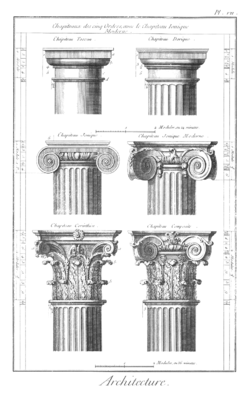

The pous (pl. podes; Greek: πούς, poús) or Greek foot (pl. feet) was a Greek unitoflength. It had various subdivisions whose lengths varied by place and over time. 100 podes made up one plethron, 600 podes made up a stade (the Greek furlong) and 5000 made up a milion (the Greek mile). The Greek pous also has long, median and short forms.
The pous spread throughout much of Europe and the Middle East during the Hellenic period preceding and following the conquests of Alexander the Great and remained in use as a Byzantine unit until the Fall of Constantinople in 1453.

A pous is divided into digitsorfingers (daktyloi) which are multiplied as shown. Generally the sexagesimal or decimal multiples have Mesopotamian origins while the septenary multiples have Egyptian origins.
Greek measures of short median and long podes can be thought of as based on body measures. The lengths may be compared to the Imperial/U.S. foot of 304.8 mm. Stecchini and others propose the Greek podes are different sizes because they are divided into different numbers of different sized daktylos to facilitate different calculations. The most obvious place to observe the relative difference is in the Greek orders of architecture whose canon of proportions is based on column diameters.
| Unit | no. of daktyloi | each daktylos (mm) | total (mm) |
|---|---|---|---|
| 1Doric order pous (foot) | 18 | 18 | 324 mm |
| 1Luwian pous (foot) | 17 | 19 | 323 mm |
| 1Attic pous (foot) | 16 | 19.275 | 308.4 mm |
| 1Minoan pous (foot) | 16 | 19 | 304 mm |
| 1Egyptian bd (foot) | 16 | 18.75 | 300 mm |
| 1Ionian Order pous (foot) | 16 | 18.5 | 296 mm |
| 1Roman pes (foot) | 16 | 18.5 | 296 mm |
| 1Athenian pous (foot) | 15 | 21 | 315 mm |
| 1Phoenician (Pele) pous (foot) | 15 | 20 | 300 mm |